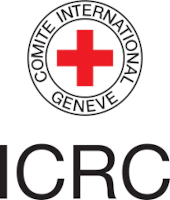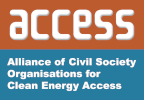Click here to register!
Difference between revisions of "Ethanol Cooking Fuel in Kenya"
***** (***** | *****) |
***** (***** | *****) |
||
| Line 53: | Line 53: | ||
<br/> | <br/> | ||
| + | |||
== Key Challenges & Recommendations == | == Key Challenges & Recommendations == | ||
| Line 66: | Line 67: | ||
It was recommended in the Dalberg report<ref name="Dalberg. (2018). Scaling up clean cooking in urban Kenya with LPG & Bio-ethanol: A market and policy analysis.">Dalberg. (2018). Scaling up clean cooking in urban Kenya with LPG & Bio-ethanol: A market and policy analysis. </ref> that the GoK takes the following steps to enable the shift to clean cooking fuel in Kenya (for the sake of this article, ECF): | It was recommended in the Dalberg report<ref name="Dalberg. (2018). Scaling up clean cooking in urban Kenya with LPG & Bio-ethanol: A market and policy analysis.">Dalberg. (2018). Scaling up clean cooking in urban Kenya with LPG & Bio-ethanol: A market and policy analysis. </ref> that the GoK takes the following steps to enable the shift to clean cooking fuel in Kenya (for the sake of this article, ECF): | ||
| − | *grant bioethanol a Zero-VAT rating: which | + | *grant bioethanol a Zero-VAT rating: which is currently under discussion |
*remove duties and other taxes on imports: which is currently under discussion<br/> | *remove duties and other taxes on imports: which is currently under discussion<br/> | ||
*establish and enforce safety and quality standards through regulatory bodies | *establish and enforce safety and quality standards through regulatory bodies | ||
<br/> | <br/> | ||
| + | |||
= Conclusion = | = Conclusion = | ||
Revision as of 08:19, 8 October 2019
Overview
Ethanol Cooking Fuel (ECF), is a renewable clean liquid biofuel which can be distilled from starch and used as a cooking fuel. This article is based on the June 2018 Dalberg Report, Scaling up clean cooking in urban Kenya with LPG & Bio-ethanol: A market and policy analysis, and specifically reflects on how ECF fits into the Kenyan cooking fuel market, as well as the challenges and opportunities it presents.[1]
Kenya's Current Cooking Fuel Situation
In the context of Kenya, the majority of the population cooks with dirty cooking fuels, which creates health issues at both the environmental and household level. Currently, kerosene, charcoal and firewood dominate the cooking fuel market[1] – all of which are considered dirty cooking fuels[1]. The Government of Kenya (GoK) has recognised the need to shift to cleaner cooking fuels in an attempt to reduce negative health and environmental impacts. Through a reduction in greenhouse gas emissions, a shift to the use of ethanol cooking fuel would be a significant contributor to Kenya's Nationally Determined Contribution (NDC).[1]
Liquid Petroleum Gas (LPG), a clean fuel option, is the better-known clean cooking fuel alternative in Kenya. Little emphasis has been placed on ECF as a viable option for a clean and easy-to-use cooking fuel in Kenya[1], but has recently received interest from private sector players, such as KOKO Networks, a technology-solution company in Nairobi which dispenses ECF through fuel ATMs, called KOKOpoints.[2]
The recent report, conducted by Dalberg Advisors, assessed the Kenyan household cooking fuel market across economic, health and environmental criteria. The findings showed that Kenyans who currently pay for their cooking fuel live in urban Kenya, while the majority of rural Kenyans use gathered wood from clearing land – which contributes significantly to deforestation. Referring specifically to urban Kenya, Kerosene is widely available, and is the cheapest cooking fuel available. Charcoal is also widely available but has a poverty premium due to the fact that buying small amounts costs 20 – 30 % more than buying in bulk.[1] LPG is currently being promoted by the GoK, with a zero-VAT rating[3], but is still largely unafforable to the lower-income population. More recently, The Kenyan Government has been supportive, with a zero-VAT rating on ethanol cooking fuel having been proposed[2].
Kenya's Ethanol Cooking Fuel Context
ECF began being used as a fuel produced by farmers during World War II. In the late 20th Century it became popular in the Western World as a recreational fuel for activities such as camping.[1] The early 21st Century saw the use of ethanol cooking fuel in refugee camps in East Africa and in more recent years, the first commercial ventures of Version 1 ECF have been used in many African countries, while the first Version 2 ECF commercial venture was launched in Nairobi in 2017[1].
Ethanol Cooking Fuel in Kenya: Socio-economic, Environmental and Health issues
In terms of environmental impact, switching from kerosene and charcoal to ECF can reduce greenhouse gas (GHS) emissions and slow down deforestation, a major contributor to land degradation. From a health and well-being perspective, switching to ECF reduces the exposure to indoor air pollution[1]. Furthermore, a shift to ECF presents economic opportunity for Kenya, by providing future growth prospects in the bioethanol production sector, which could lead to the creation of tens of thousands of jobs across the value chain[1]. This will require demand for bioethanol to grow, which requires enabling the sector through removing policy and tax barriers (discussed further in section key challenges & recommendations). Socio-economically, the shift to ECF also enables lower income people to access smaller volumes, making it more affordable, as well as reducing time spent collecting fuel per household (mostly for women)[1]. This accessiblity has been enabled by the KOKO Networks business model.
A transition to ECF in Kenya, would help towards achieving the Sustainable Development Goals (SDGs) 3, 5, 7 and 13[1]:
SDG 3: Good Health and Well-being
SDG 5: Gender Equality
SDG 7: Afforable and Clean Energy
SDG 13: Climate Action
Key Challenges & Recommendations
At the time publishing (June 2018), the Dalberg report stated that Kenya is ranked below other sub-saharan African countries in terms of ECF friendly policy[1]. Its cost in Kenya is inflated by 25% import tariffs, but, as mentioned, the GoK has shown support to grant it with a zero-VAT rating. In order for ECF to compete with other cooking fuels, similar steps (in the form of favourable tariff treatment) are needed to level the playing field. Despite LPG being an existing clean cooking fuel option with a zero-VAT rating, it is only afforable to a small percentage of urban Kenya and therefore the challenges of ECF need to be overcome to enable the lower-income population to afford the necessary shift to clean cooking fuels[1].
In order for the ECF sector to grow in Kenya, investors will want to see a demand track record. According to the Dalberg report, to create this demand and accelerate the ECF market, a phased approach is required.[1] The GoK will need to implement further tax concessions to make ECF more competitive and therefore drive the demand, consequently driving local supply. Fortunately, ECF can leverage existing infrastructure which represents an opportunity for the industry.[1]
It was recommended in the Dalberg report[1] that the GoK takes the following steps to enable the shift to clean cooking fuel in Kenya (for the sake of this article, ECF):
- grant bioethanol a Zero-VAT rating: which is currently under discussion
- remove duties and other taxes on imports: which is currently under discussion
- establish and enforce safety and quality standards through regulatory bodies
Conclusion
ECF presents a viable alternative cooking fuel option for Kenyans who currently pay for their cooking fuel. This change represents an opportunity for Kenya to contribute towards the SDGs and its NDC. The GoK has been proactive in promoting clean fuels, and an opportunitiy remains to eliminate the barriers to drive the adoption of clean cooking fuels, such as ECF.
References:
- ↑ 1.00 1.01 1.02 1.03 1.04 1.05 1.06 1.07 1.08 1.09 1.10 1.11 1.12 1.13 1.14 1.15 1.16 Dalberg. (2018). Scaling up clean cooking in urban Kenya with LPG & Bio-ethanol: A market and policy analysis. Cite error: Invalid
<ref>tag; name "Dalberg. (2018). Scaling up clean cooking in urban Kenya with LPG & Bio-ethanol: A market and policy analysis." defined multiple times with different content Cite error: Invalid<ref>tag; name "Dalberg. (2018). Scaling up clean cooking in urban Kenya with LPG & Bio-ethanol: A market and policy analysis." defined multiple times with different content Cite error: Invalid<ref>tag; name "Dalberg. (2018). Scaling up clean cooking in urban Kenya with LPG & Bio-ethanol: A market and policy analysis." defined multiple times with different content Cite error: Invalid<ref>tag; name "Dalberg. (2018). Scaling up clean cooking in urban Kenya with LPG & Bio-ethanol: A market and policy analysis." defined multiple times with different content Cite error: Invalid<ref>tag; name "Dalberg. (2018). Scaling up clean cooking in urban Kenya with LPG & Bio-ethanol: A market and policy analysis." defined multiple times with different content Cite error: Invalid<ref>tag; name "Dalberg. (2018). Scaling up clean cooking in urban Kenya with LPG & Bio-ethanol: A market and policy analysis." defined multiple times with different content Cite error: Invalid<ref>tag; name "Dalberg. (2018). Scaling up clean cooking in urban Kenya with LPG & Bio-ethanol: A market and policy analysis." defined multiple times with different content Cite error: Invalid<ref>tag; name "Dalberg. (2018). Scaling up clean cooking in urban Kenya with LPG & Bio-ethanol: A market and policy analysis." defined multiple times with different content Cite error: Invalid<ref>tag; name "Dalberg. (2018). Scaling up clean cooking in urban Kenya with LPG & Bio-ethanol: A market and policy analysis." defined multiple times with different content Cite error: Invalid<ref>tag; name "Dalberg. (2018). Scaling up clean cooking in urban Kenya with LPG & Bio-ethanol: A market and policy analysis." defined multiple times with different content Cite error: Invalid<ref>tag; name "Dalberg. (2018). Scaling up clean cooking in urban Kenya with LPG & Bio-ethanol: A market and policy analysis." defined multiple times with different content Cite error: Invalid<ref>tag; name "Dalberg. (2018). Scaling up clean cooking in urban Kenya with LPG & Bio-ethanol: A market and policy analysis." defined multiple times with different content Cite error: Invalid<ref>tag; name "Dalberg. (2018). Scaling up clean cooking in urban Kenya with LPG & Bio-ethanol: A market and policy analysis." defined multiple times with different content Cite error: Invalid<ref>tag; name "Dalberg. (2018). Scaling up clean cooking in urban Kenya with LPG & Bio-ethanol: A market and policy analysis." defined multiple times with different content Cite error: Invalid<ref>tag; name "Dalberg. (2018). Scaling up clean cooking in urban Kenya with LPG & Bio-ethanol: A market and policy analysis." defined multiple times with different content Cite error: Invalid<ref>tag; name "Dalberg. (2018). Scaling up clean cooking in urban Kenya with LPG & Bio-ethanol: A market and policy analysis." defined multiple times with different content - ↑ 2.0 2.1 Whitehouse, D. (2019) ‘Ethanol for cooking can help reduce Africa’s energy poverty’, The Africa Report, 25 June. Available at: https://www.theafricareport.com/14506/ethanol-for-cooking-can-help-reduce-africas-energy-poverty/ (Accessed 2 October 2019)
- ↑ Alliance News. (2016) ‘Kenya Drops Trade, Tax Barriers to Aid Adoption of Cleaner Cooking Technologies’, Clean Cooking Alliance, 22 June. Available at: https://www.cleancookingalliance.org/about/news/06-22-2016-kenya-drops-trade-tax-barriers-to-aid-adoption-of-cleaner-cooking-technologies.html (Accessed 2 October 2019).



















